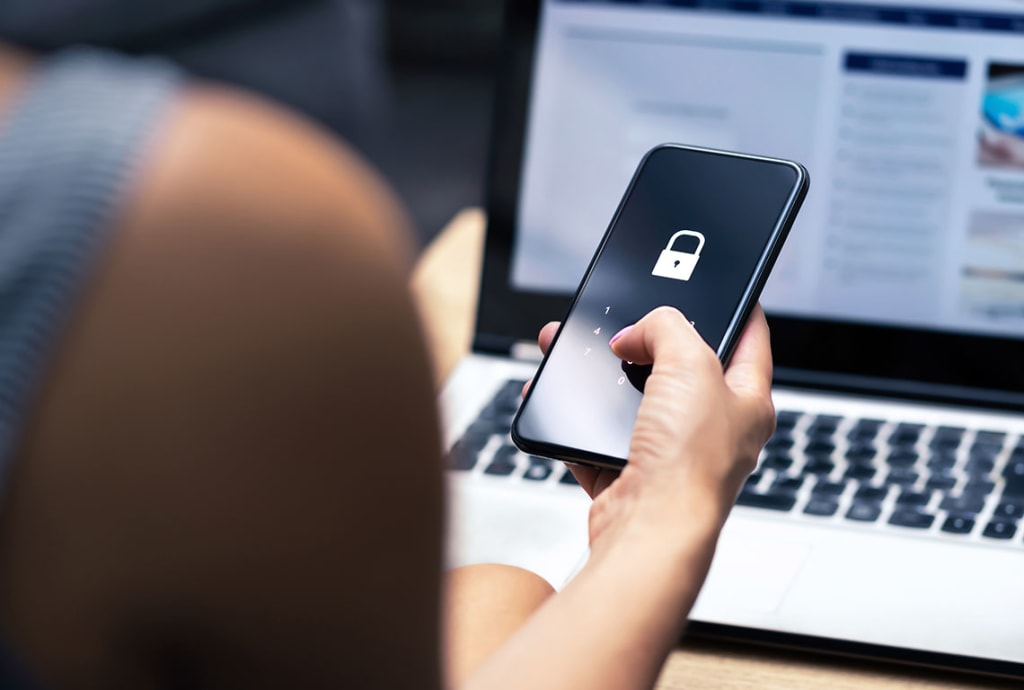Five Simple Steps To Reclaim Your Digital Privacy
Digital privacy doesn't have to be an unattainable goal, and here's how you can achieve it.

Today, we do everything online. And that new reality means we all have an awful lot of personal information about ourselves floating around out there. Scammers use it to fuel vast identity theft schemes. Businesses collect and sell it to help other businesses more precisely target us with advertising. Even our employers scour the internet looking for clues as to our proclivities and the specifics of our private lives.
If you're anything like me, you probably wish there was a way for you to reclaim your privacy. And guess what? There is!
All you need to do is know how to find your digital footprints and minimize or erase them. You don't need to pay anyone, and you don't have to wait for new privacy legislation to pass. (Spoiler: you don't have that kind of time.) All you need is a simple digital privacy roadmap and the time and energy it takes to follow it. Here are five simple steps to reclaim your digital privacy.
Find and Close Unused Accounts
The first thing you'll need to do to reclaim your digital privacy is to minimize your digital footprint. And the first step to doing that is to get rid of as many of your unused online accounts as possible. You can do this by looking for evidence of accounts you may have forgotten in:
- Your browser(s) password manager
- Your email history
- The Have I Been Pwned website
- Facebook and Google accounts (for sites you authorized to use your login)
Once you have a decent list of unused accounts, you can proceed to close them, one by one. Take care to look for each account's policy regarding data deletion. If you have the option to wipe all of your data, do it. If the site associated with the account deletes data after a certain time from your cancellation, make a note to check back that it actually happens on that date.
Review All Privacy Settings
Once you've whittled your list of accounts down to a manageable number, your next step is to minimize the data the remaining ones collect. Most online sites and services now offer privacy settings that give you some level of control over data collection. So, go through each account you're still using and turn on as many privacy-focused settings as possible.
As you do, you should recognize that some sites and services collect data to personalize your experience. That means turning off certain types of data collection can change how you experience the site or service. And you can't count on getting a clear, plain-English explanation of what each privacy control will affect. So, the best approach is to enable every privacy setting available, and then use the site or service to see what's changed. If something seems off, experiment with the controls until you arrive at a combination that yields results you can live with.
Reset All Passwords
By now, I would hope that everyone knows how important it is to use strong, single-use passwords on all online accounts. This acts as something of a firewall that prevents a data breach at a single site from affecting other accounts you maintain elsewhere. But just in case you've gotten lax with your password hygiene, it's a good idea to take the time to reset the passwords on every account you plan to keep using.
If you're not already using one, it's a good idea to choose and install a standalone password manager to help with this process. Many include secure password generators that will eliminate the need for you to think up multiple new passwords. And since a password manager means you don't have to remember passwords anymore, you can feel free to turn the generator up to the highest complexity that of your accounts support.
And, if you tend to use multiple devices to access your accounts, it's a good idea to consider purchasing a password manager security key. It'll make your credentials portable and upgrade your security against hackers at the same time.
Request That Data Brokers Delete Your Information
One of the biggest problems you'll face when trying to reclaim your digital privacy is that the internet has a long memory. This means any data you've ever shared online could crop up in any number of places even after you delete its original instance. Plus, there's a huge amount of personal data available online that comes from public records, which anyone can access if they know how.
This is the stock-in-trade of data brokers. They're businesses that exist to accumulate data about as many people as possible so they can sell access to it. Those sites offering to help you find old classmates? Data brokers. The online companies offering one-click background checks? Data brokers. Oh, and if you ever wondered why companies and organizations you've never heard of seem to send you oddly specific mailers or advertisements? You can thank data brokers for that, too.
The good news is that it is possible to get most data brokers to delete your data. But it's a long and laborious process that you'll have to devote significant time and energy to accomplish. A great place to start is with this open-sourced list of data brokers and their opt-out procedures. And once you've made it through that list, you'll still need to wait a month or so and then Google your name. This should let you know what other sites still have information about you so you can visit them to request a deletion.
Learn How To Stop Oversharing
If you've made it this far, you should have some appreciation for how hard it is to clean up the trail of data you've left all over the internet. So, you should be quite interested in knowing how to avoid having to do it again. The key to that is to learn how to stop oversharing online.
First, make it a point not to give out your email address and name unless you absolutely have to. And, if a site bugs you to create an account just to use it, either skip it or use a throwaway email address to register. That way, any orphaned accounts you forget about won't connect back to you anyway.
Second, you'll need to limit your social media use and restrict who may access your social pages to close friends and family. And every time you consider posting any information online, ask yourself if you're comfortable with it being public knowledge. If not, you should reconsider posting it. A little bit of care can go a long way. And you'll save yourself endless privacy headaches in the long run.
The Bottom Line
So there you have it. A simple, albeit time-consuming, way to reclaim your online privacy. With some luck, you'll get through the process with a minimum of hassle and end up with a manageable digital footprint at the end of it. And then, you can get back to using the internet — responsibly — without worrying as much about who's watching you, what data they're collecting, and what they plan to do with it.
About the Creator
Andrej Kovacevic
Tech blogger & Editor @ TechLoot.co.uk
Enjoyed the story? Support the Creator.
Subscribe for free to receive all their stories in your feed. You could also pledge your support or give them a one-off tip, letting them know you appreciate their work.






Comments
There are no comments for this story
Be the first to respond and start the conversation.